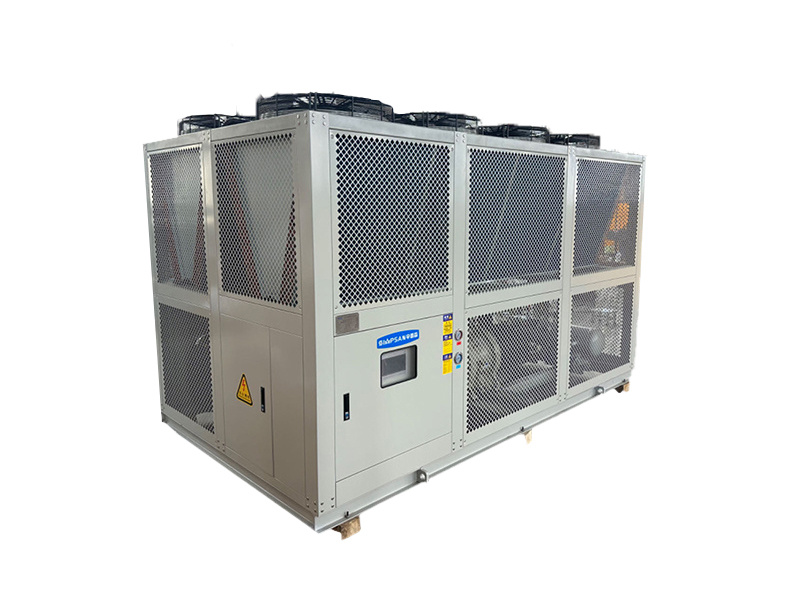Understanding Hot and Cold Integrated Temperature Control Units: A Key to Efficient Industrial Cooling
2025-11-17 11:10
In the world of industrial equipment and components, maintaining optimal temperature control is crucial for the efficient operation of various processes, particularly in cooling applications. One of the key innovations in this area is the hot and cold integrated temperature control unit. This advanced system combines heating and cooling functions into a single unit, ensuring precise temperature regulation across a variety of industrial environments.
Hot and cold integrated temperature control units operate by utilizing a cycle of refrigeration and heating to maintain a desired temperature set point. These units are designed to simultaneously provide both heating and cooling as needed, thereby enhancing operational efficiency and flexibility. This capability is particularly beneficial in situations where the temperature requirements may change frequently, allowing for quick adjustments without the need for multiple separate systems.
One of the major advantages of using hot and cold integrated temperature control units is their ability to improve energy efficiency. Traditional systems often require separate heating and cooling units, which can lead to increased energy consumption and higher operational costs. By integrating both functions, these units minimize redundant energy use and streamline the temperature control process. This not only reduces the overall energy footprint but also contributes to a more sustainable approach to industrial cooling.
Moreover, these units typically incorporate advanced control technologies, which allow for precise monitoring and adjustment of temperature settings. This level of control can lead to improved product quality, as maintaining a consistent temperature is essential for many industrial processes. Fluctuations in temperature can result in defects, spoilage, or other issues that can compromise the quality of the end product. Therefore, utilizing a hot and cold integrated temperature control unit can significantly enhance product consistency and reliability.
Another important consideration is the compact design of these integrated units. By combining heating and cooling functions into one system, manufacturers can save valuable space in their facilities. This is particularly beneficial for operations with limited floor space, as it allows for more efficient use of the available area while still providing effective temperature control.
In conclusion, hot and cold integrated temperature control units represent a significant advancement in the field of industrial cooling. By offering combined heating and cooling capabilities, these systems improve energy efficiency, enhance process reliability, and save valuable space in industrial settings. As industries continue to seek ways to optimize their operations, the adoption of these advanced temperature control units will likely become increasingly prevalent, paving the way for improved performance and sustainability in industrial processes.
Hot and cold integrated temperature control units operate by utilizing a cycle of refrigeration and heating to maintain a desired temperature set point. These units are designed to simultaneously provide both heating and cooling as needed, thereby enhancing operational efficiency and flexibility. This capability is particularly beneficial in situations where the temperature requirements may change frequently, allowing for quick adjustments without the need for multiple separate systems.
One of the major advantages of using hot and cold integrated temperature control units is their ability to improve energy efficiency. Traditional systems often require separate heating and cooling units, which can lead to increased energy consumption and higher operational costs. By integrating both functions, these units minimize redundant energy use and streamline the temperature control process. This not only reduces the overall energy footprint but also contributes to a more sustainable approach to industrial cooling.
Moreover, these units typically incorporate advanced control technologies, which allow for precise monitoring and adjustment of temperature settings. This level of control can lead to improved product quality, as maintaining a consistent temperature is essential for many industrial processes. Fluctuations in temperature can result in defects, spoilage, or other issues that can compromise the quality of the end product. Therefore, utilizing a hot and cold integrated temperature control unit can significantly enhance product consistency and reliability.
Another important consideration is the compact design of these integrated units. By combining heating and cooling functions into one system, manufacturers can save valuable space in their facilities. This is particularly beneficial for operations with limited floor space, as it allows for more efficient use of the available area while still providing effective temperature control.
In conclusion, hot and cold integrated temperature control units represent a significant advancement in the field of industrial cooling. By offering combined heating and cooling capabilities, these systems improve energy efficiency, enhance process reliability, and save valuable space in industrial settings. As industries continue to seek ways to optimize their operations, the adoption of these advanced temperature control units will likely become increasingly prevalent, paving the way for improved performance and sustainability in industrial processes.
More Information
2025-11-17
In the world of industrial equipment and components, maintaining optimal temperature control is crucial for the efficient operation of various processes, particularly in cooling applications. One of the key innovations in this area is the hot and cold integrated temperature control unit. This advanced system combines heating and cooling functions into a single unit, ensuring precise temperature re
2025-11-10
How Ultra-Low Temperature Cascade Chillers Revolutionize Cooling Processes
How Ultra-Low Temperature Cascade Chillers Revolutionize Cooling Processes
In the constantly evolving landscape of industrial cooling technologies, **ultra-low temperature cascade chillers** have emerged as pivotal solutions for various sectors, including pharmaceuticals, chemical processing, and food and beverage industries. These advanced chillers not only deliver efficient cooling but also pr
2025-11-03
Understanding Ultra-Low Temperature Cascade Chillers: A Comprehensive Guide
Ultra-low temperature cascade chillers are specialized cooling systems designed to achieve and maintain extremely low temperatures, often well below the freezing point of water. These systems are critical in various industrial applications, including scientific research, pharmaceuticals, and certain manufacturing processes. Understanding how these chillers work and their benefits can help industri
2025-10-27
Unlocking the Benefits of Ultra-Low Temperature Cascade Chillers in Industry
Unlocking the Benefits of Ultra-Low Temperature Cascade Chillers in Industry
Introduction to Ultra-Low Temperature Cascade Chillers
In the realm of industrial refrigeration, **ultra-low temperature cascade chillers** are transforming how businesses manage temperature-sensitive processes. These advanced cooling systems are not merely a trend; they represent a significant shift in how industries t
2025-11-17
In the world of industrial equipment and components, maintaining optimal temperature control is crucial for the efficient operation of various processes, particularly in cooling applications. One of the key innovations in this area is the hot and cold integrated temperature control unit. This advanced system combines heating and cooling functions into a single unit, ensuring precise temperature re









 CN
CN EN
EN



